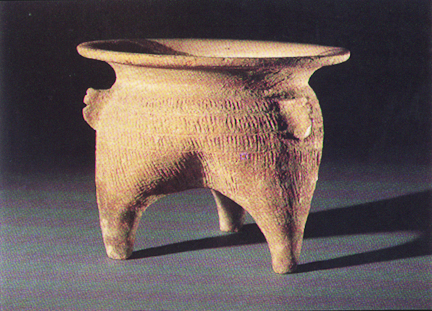Like the Shang Dynasty, the Zhou Dynasty was also at one time thought to merely the stuff of legend, but it too did actually exist. The first complex system of government and religion took place during this period, and especially with the writings of Confucius (550-480 BCE), the reverence for elders and tradition that have long characterized Chinese culture began. Large royal tombs from this period show evidence that wives and servants were burned and buried with the deceased rulers. Confucius condemned this practice as barbaric and through the influence of his writings, the practice would gradually disappear, being replaced by clay and wooden model substitutes for the human sacrifices. Royal burials also included items for use by the deceased in the afterlife, including metal and clay containers for food. In fact, many of the burial vessels contain remains of the food offerings.
Another Chinese philosopher who wrote during this period was Lao Tzu whose teachings came to be known as Daoism or Taoism, an indigenous philosophical tradition that has shaped Chinese life for more than 2,000 years. According to the Encyclopedia Britannica, "In the broadest sense, a Taoist attitude toward life can be seen in the accepting and yielding, the joyful and carefree sides of the Chinese character, an attitude that offsets and complements the moral and duty-conscious, austere and purposeful character ascribed to Confucianism. Taoism is also characterized by a positive, active attitude toward the occult and the metaphysical (theories on the nature of reality), whereas the agnostic, pragmatic Confucian tradition considers these issues of only marginal importance, although the reality of such issues is, by most Confucians, not denied. . . . There is also a tendency among scholars today to draw a less rigid line between what is called Taoist and what is called Confucian. The two traditions share many of the same ideas about man, society, the ruler, Heaven, and the universe-ideas that were not created by either school but that stem from a tradition prior to either Confucius or Lao-tzu."
This coil built, tripod bowl (called a ding) shows the perseverance of this tripod vessel first seen in Neolithic times. Still used as a cooking vessel, the hollow legs are efficiently designed to distribute the heat from a cooking fire. The decoration appears to have been made by rolling an impressed design into the clay surface.

ZHOU DYNASTY TRIPOD DING,
China, 1000 BCE, 5.75" height


